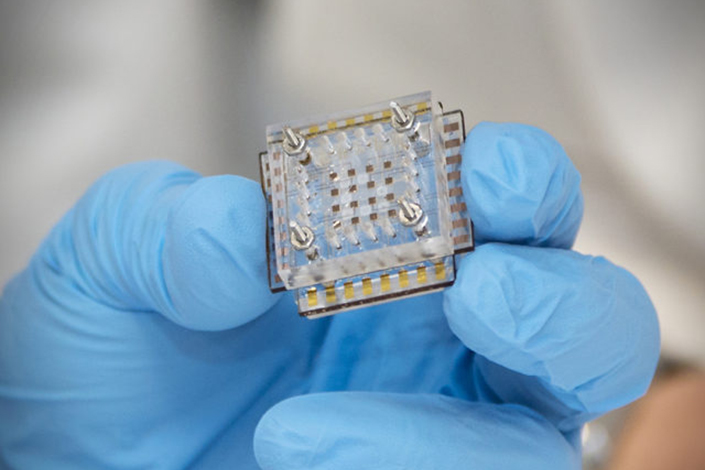Tissue chips could improve method for screening chemicals for safety

The U.S. Environmental Protection Agency (EPA) has awarded Texas A&M University professors Ivan Rusyn and Weihsueh Chiu a Science to Achieve Results (STAR) grant to enhance chemical safety testing methods in the field of toxicology.
Rusyn and Chiu, professors in the College of Veterinary Medicine & Biomedical Sciences’ (CVMBS) Department of Veterinary Integrative Biosciences (VIBS), received nearly $800,000 for the study “Integrating tissue chips, rapid untargeted analytical methods and molecular modeling for toxicokinetic screening of chemicals, their metabolites and mixtures.”
This three-year project aims to use biological, analytical, and modeling methods to improve upon current in vitro-to-in vivo extrapolation (IVIVE), a technique used in toxicology to determine how chemical exposures will impact an organism, for common industrial compounds and pesticides.
“The importance of this project is that it addresses a very acute need—to be able to extrapolate safe or unsafe concentrations of chemicals from experiments in cells to human oral, dermal, or inhalation exposures,” Rusyn said.
IVIVE, which involves taking data learned from in vitro studies (those done outside a biological context, or “test tube experiments”) and applying it to in vivo studies (those done on complete biological organisms), currently has numerous limitations. For example, researchers are typically forced to make many assumptions when converting in vitro data into applicable in vivo information.
By working with Erin Baker from North Carolina State University, the team aims to reduce the uncertainty of traditional IVIVE approaches by using tissue chips to generate toxicokinetic (the study of at what rate a chemical will enter the body and what happens to it once it is in the body) data and then refining that data with analytical and modeling methods.
“What we propose is really different from other current solutions because we propose to use rather complicated cell-based models, these so-called tissue chips,” Rusyn said. “We want to see if replacing the current simplistic models with more complicated, but also much more physiologically relevant, models would actually improve the confidence in the type of data that we get for this IVIVE.”

